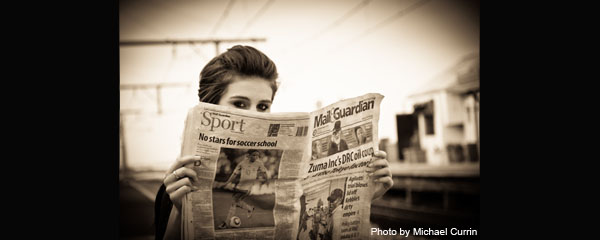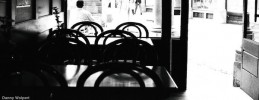
photo by Michael Currin
Read All About It!
a Writing Exercise from Annabelle Carvell
It is very easy to fall into a lazy writing routine once you have left university. By a ‘lazy routine’, I mean the lack of any routine at all. Deadlines for assignments, lectures, mandatory reading and workshops are all a thing of the past – as are those useful writing exercises that were largely underappreciated. Now, you are completely on your own.
It is your job to motivate yourself to write, and to find your own exercises – whether online or by constructing one yourself.
I have been through the motions… the lull of a ‘writing-free’ summer, celebrating the idea that I might never have to write another essay again. I also had the alarming realisation that my celebrations were in vain, and that I missed writing. Whether it was in the form of a critical essay, a short commentary on an author’s work, or a short story, I missed it. Unhelpfully, this epiphany arrived at the tender hour of midnight, and I spent many hours turning in my bed, wondering whether or not I would ever be able to write again.
Soon afterwards, I created a writing exercise of my own. It caught me unawares and propelled me into a new system for finding inspiration. The exercise, as I have coined it, is:
Read All About It!
(The little newspaper boy should be echoing in your ears… this is, indeed, a ‘News Story’ exercise.)
1. Find/rediscover a news story that resonates with you. This might be a harrowing and moving story, an amusing tale that you recounted to friends, or, in my case, a totally bizarre and almost unbelievable story – the kind that goes viral in seconds.
2. Get to know the story well. Read as much as you can about the story – what the unanswered questions are, who the suspects might be, what the police/family/friends assume happened. Consider where the story took place: was it in the Deep South of the United States? Did it occur in the heart of Croydon, or another London suburb? Do you wish the story took place somewhere else?
3. As a writer, you can be in control of the true events (or perhaps, as with McEwan’s Atonement, the untrue reconstructed events). What you can now experiment with is filling in the gaps yourself.
For example: a man has been murdered. The police can only deduce what happened from the information they are presented with. The only people who know what really happened that day are those involved. Put yourself in their position, from either the victim’s or the attacker’s perspective.
4. You have the freedom to rewrite the story. And you can decide how faithful to the original tale you would like to be. If you want to create an anonymous town where that getaway donkey ruined a robbery, then do so. You could dig further into the history, allowing your story to follow the path of real events, but using different characters. Or you might decide that the news story is simply a spark that inspires your very own set of events.
What you should be left with is a buzzing mind and itchy fingers, frantically searching for somewhere to jot down notes, sentences, exchanges of dialogue that you have imagined.
It’s an exercise that has led me to actively look for ideas in new places. And it’s certainly not limited to news articles. Another way to put it into practice is to watch documentaries. Channel 4‘s offerings are truly thought-provoking, and have been the source of some of the drafts I am working on right now – the recent, ‘eye-opening’ 15-Stone Babies in particular.
Watching a documentary or discovering that news story, and becoming fully immersed in reading about it, harnesses the creative brain. You’ll soon find that this exercise breaks the dam which slowly forms over months of dormancy. Here’s something that might help start you off – ‘Weird News’. Have your notebooks at the ready!

